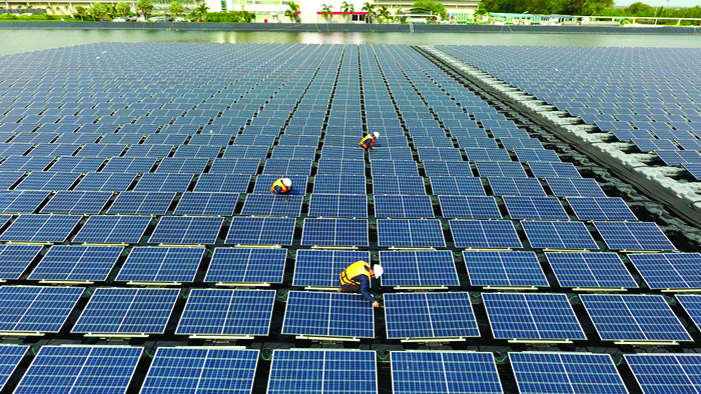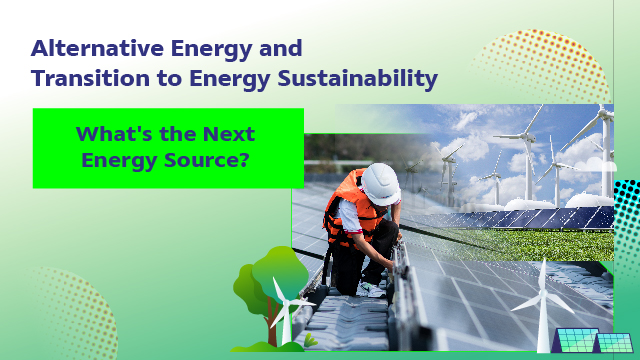For countless decades, our world has relied on various forms of energy to meet the fundamental needs of humankind—such as heating, cooling, lighting, and powering devices that have evolved over time. With advancements in industrial sectors and technology, the energy demand has skyrocketed to sustain the needs of all life forms on Earth.
A Brief History of Humanity's Energy Evolution
From the moment human civilization came on Earth, it marked the beginning of diverse forms of energy utilization. Initially, living beings solely depended on the energy from the sun and natural food sources. Humans learned to create fire by rubbing sticks together to cook food, use energy from water wheels, sail across oceans using wind energy, or even hunt whales for oil to light their lamps. The adoption of coal marked the beginning of humanity's dependence on fossil fuels, ushering us into the industrial age.
The discovery of black liquid beneath the Earth's surface was a significant turning point in the global energy landscape. Crude oil was refined and virtually replaced all other forms of energy on the planet. From the first liter of oil used by humans to over 100 million barrels consumed per day today, fossil fuels like natural gas have also been increasingly tapped for various applications. These energy sources have propelled advancements in industries, transportation, consumer goods, and overall global prosperity. Yet, we have overlooked the impact of relying on oil-based energy.
Energy Behind Global Warming
While humanity continues to harness the benefits of fossil fuels, carbon dioxide (CO2) is emitted into the atmosphere day after day. These tiny molecules are a byproduct of burning fossil fuels for energy, and their quantity correlates directly with petroleum production. The concentration of carbon dioxide has risen sharply, from 290 parts per million (ppm) in 1800 to 416 ppm in 2021. To put this into perspective, for the past 800,000 years of Earth's history, CO2 concentration levels hovered only around 300 ppm, indicating a drastic increase in a relatively short period.
Every time fossil fuels are burned, particularly coal and oil, carbon dioxide and other greenhouse gases are released into the Earth's atmosphere. Due to the properties of these gases, which effectively trap and retain heat, the Earth's natural heat is prevented from reflecting into space. This has led to "climate change," which has evolved to the point of becoming "global warming" and is now escalating into a crisis state known as "global boiling." These phenomena have direct and unavoidable consequences for all life on Earth.
Energy Transition Points
Even though the hypothesis regarding the increase in global temperatures due to the burning of fossil fuels has been around for more than 150 years, humanity has only recently begun to pay serious attention to this issue in the past few years. This has led to the development of various forms of alternative energy to replace oil. When categorizing these energy sources based on their origins, they can be divided into two types:
- Alternative Energy: This refers to energy from other fossil sources besides oil, which are non-renewable once used. Examples include coal and natural gas.
- Renewable Energy: This energy can be continually produced, regenerated, and recycled. It is mainly clean energy that is environmentally friendly, such as wind energy, solar energy, hydro energy, biomass energy,
In some cases, alternative energy may also refer to other forms of energy that replace fossil fuels like coal, oil, and petroleum, which are gradually being depleted. Humans have been using These natural forms of energy for a long time to generate heat, light, motion, or other utilities. However, these alternative forms of energy are currently being transformed into electrical currents to be directly distributed to various locations.
Speaking of alternative energy, the concept often goes hand in hand with sustainability considerations. This is because alternative energy is being developed with the hope of providing a solution to reducing carbon dioxide emissions from fossil fuels. As global temperatures continue to rise without signs of abating, this further accelerates human efforts to shift from traditional energy sources to cleaner, non-polluting ones. These efforts aim to address the root causes of climate change, leading to a megatrend in energy that is set to revolutionize how humanity utilizes energy.
Time to Use Clean Energy to Drive the World Forward
According to the International Energy Agency (IEA), global energy usage is predicted to increase by 3.3% in 2024, rebounding from a decrease in demand during the COVID-19 pandemic in the past few years. At the same time, renewable energy, which is a clean form of energy, is expected to account for one-third of the global electricity supply. At present, 26% of global energy comes from renewable sources, and this figure is expected to rise to 30% next year due to reduced production costs and urgent environmental crises that are accelerating the development of clean energy technologies.
An article from S&P Global Commodity Insights highlights a transformative trend in energy for 2023. It predicts that global demand for installing wind, solar, and battery power plants will reach nearly 500 gigawatts—or around 500,000,000 kilowatts—a 20% increase from 2022. This forecast aligns with the REPowerEU plan, a policy to boost the construction of renewable power plants in the European Union. The approach also encourages domestic production of equipment related to alternative energy and offers tax incentives to enhance sustainable production capacities in the renewable energy industry. These do not even account for environmental and clean energy promotion measures in various countries worldwide.

Solar Energy: Another Hope for Humanity
Solar energy, or solar cells, is humanity's latest wave of hope. According to data from the International Energy Agency, the world is on track to increasingly rely on renewable energy, even surpassing coal and natural gas in terms of consumption within this decade. What backs this transition is the lower costs of solar cell energy compared to coal and natural gas in many countries, leading the public to consider switching to solar-powered electricity.
What is evident in 2023 is the enthusiasm among households and small businesses in adopting solar cells as an alternative to conventional electricity, whose costs have soared due to rising fuel prices. Some countries have policies encouraging the public to install solar panels and batteries to enhance energy management efficiency. Moreover, there is the incentive of buy-back electricity schemes to motivate people to switch to solar cells.
_1694580517_3.jpg)
For SCGC, a leader in Chemicals Business for Sustainability in the region, the shifting landscape of the energy sector offers significant business opportunities. Recognizing this, we have developed our chemical product innovations to align with the megatrends in alternative energy by introducing SCGC Floating Solar Solutions. This cutting-edge technology provides floating platforms for installing solar cells and has led to the creation of Thailand's first-ever floating solar farm. The design features emphasize durability, easy installation, and environmental friendliness.
Our world operates on energy, but whether we can move forward sustainably depends on the path of energy consumption we choose. We firmly believe that in the future, we will witness revolutionary advancements in energy that will be as transformative as the industrial progress that has taken humanity further than ever imagined. When that day comes, we will be able to address global warming and coexist harmoniously with nature.
Sources 1
Sources 2
Sources 3
Sources 4
Sources 5





_1694580517_3.jpg)

